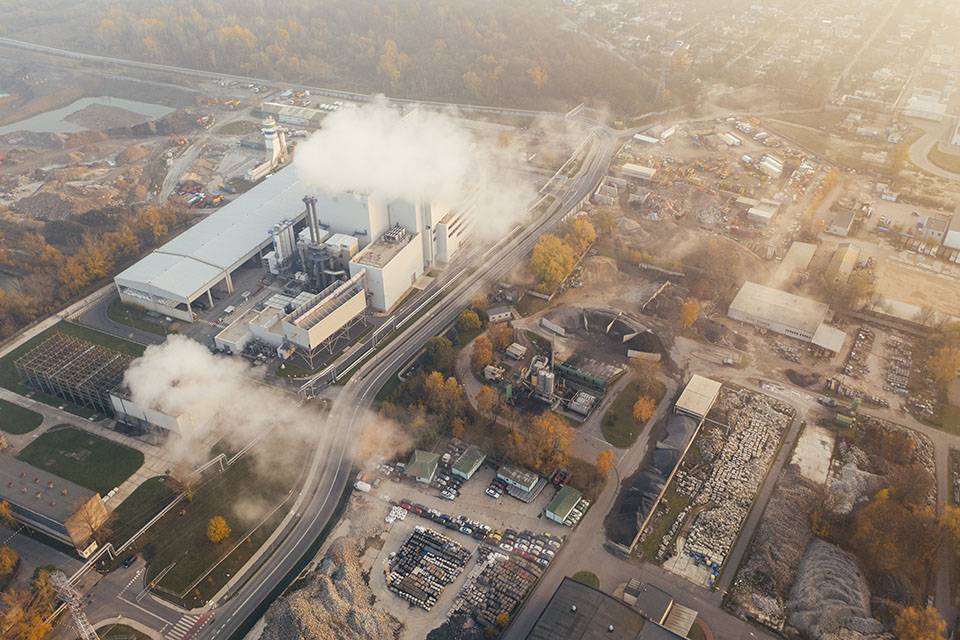We wear clothes literally every day, but few of us spend time reflecting on what goes into manufacturing various textiles and their environmental impacts.This is interesting considering how much we think about the food we eat or the skincare products we use.
You recycle glass, plastic, and paper at home, bring your own coffee mug to Starbucks, take a reusable bag along when you go shopping, and are generally doing everything you can to reduce your impact on the environment, right?
But most of us do not realize how environmentally intensive it is to make a single tee shirt.
That T-shirt you are wearing—do you know how much water was used to make it? How much fuel expended to ship it? How many grams of scraps were cast aside from the trimmings?
The life cycle of the tee shirt can be divided into four stages – the production of the garment, the distribution and sale, the use, and the disposal, which we can safely call “end of life.”
Your tee-shirt came a long way before ending up on the shelf at your neighborhood clothing store.
A basic life cycle analysis typically follows a product from creation, including obtaining or making the raw materials, through disposal, whether that is discarding, recycling, or otherwise getting rid of it. The more elements of the cycle that are incorporated, the more accurate the picture that starts to form.
After the cotton is grown in one part of the world, a process that requires large amounts of water and pesticides, it needs to be treated, knitted, and dyed at a facility and stitched in low wage and impoverished countries and only then they are shipped to wealthier markets like U.S. or Europe.
All this transportation required to get a clothing item into the hands of the consumer is why apparel production accounts for almost 10 % of worldwide carbon emissions.

After the consumers take their tee shirt home, the impact does not stop there.
That tee shirt will need to be washed many times throughout its life cycle, eating up water and energy along the way.
The production of cotton-textiles uses up large amounts of resources, such as water and energy, as well as releasing byproducts of starch, paraffin, dyes, pesticides, and other harmful pollutants into the air and soil — under regular conditions.
Aside from carbon emissions, the remnants of the pesticides sprayed on cotton and the chemicals used to dye, fade, and stonewash clothes pollute the air, waterways, and workers’ lungs. The cotton industry uses 25% of the world’s pesticides and herbicides.
The drop in garment prices over the last 20 years has allowed us to buy more and more clothes. We now have 5 times more clothes than our grandparents had.
In reality, this continuous accumulation of cheap garments is only possible because of a constant reduction in production costs. This, in turn, has serious consequences on our health, our planet, and the garment workers’ lives.
Consumer trends clearly reflect this embrace of quick, disposable clothes. In the past 15 years, the production of clothes has almost doubled, and the clothes’ shelf life has decreased by a third. And where do these clothes go?
Let us now see the environmental and health impact which one piece of tee shirt has on nature and human.

Soil degradation caused by the fashion industry.
Soil is a fundamental element of our ecosystem. We need healthy soil for food production but also to absorb CO2. The massive, global degradation of soil is one of the main environmental issues our planet is currently facing. It presents a major threat to global food security and also contributes to global warming.
The fashion industry plays a major part in degrading soil in different ways: overgrazing of pastures through cashmere goats and sheep raised for their wool; degradation of the soil due to massive use of chemicals to grow cotton; deforestation caused by wood-based fibers like rayon.
Every year, thousands of hectares of endangered and ancient forests are cut down and replaced by plantations of trees used to make wood-based fabrics such as rayon, viscose, and modal. This loss of forest is threatening the ecosystem and indigenous communities, as in Indonesia where large-scale deforestation of the rain forests has taken place over the past decade.
Greenhouse gases emissions of the fashion industry
The apparel industry accounts for almost 10% of global carbon emissions. The global fashion industry is generating a lot of greenhouse gases due to the energy used during its production, manufacturing, and transportation of the million garments purchased each year.
Did you know that the tee shirt and jeans you are wearing cost the Earth 8300 liters of water, enough to fill a small tanker truck?
Working conditions in the fashion industry
We have known this for decades: most of our clothes are made in countries where workers’ rights are limited or non-existent. In fact, production sites are regularly moving locations, on the lookout for ever cheaper labor costs.
We often hear company owners saying that "for these workers, it is better than nothing”, “at least we give them a job”, and to a certain extent, they are right. But it is also right to say that they are exploiting the misery and taking advantage of the poor population who have no choice but to work for any salary, in any working conditions.
We know that if working conditions improve in one country, companies will just move to another. We believe that we cannot expect much from the corporate world or governments if consumers do not push for a change.
Many fashion brands assure their customers that the workers who made their clothing are paid "at least the minimum legal wage". But what exactly does that mean?
First of all, it means that many other brands do not even pay the minimum legal salary.
Furthermore, in most of the manufacturing countries (China, Bangladesh, India..), the minimum wage represents between half to a fifth of the living wage. A living wage means the bare minimum that a family requires to fulfill its basic needs (food, rent, healthcare, education, etc).
So, in summary, these brands are bragging about paying their employees 5 times less than what a person actually needs to live with dignity.
Garment workers are often forced to work 14 to 16 hours a day, 7 days a week. During peak season, they may work until 2 or 3 am to meet the fashion brand's deadline. Their basic wages are so low that they cannot refuse overtime - aside from the fact that many would be fired if they refused to work overtime. In some cases, overtime is not even paid at all.
Employees usually work with no ventilation, breathing in toxic substances, inhaling fiber dust, or blasted sand in unsafe buildings. Accidents, fires, injuries, and disease are very frequent occurrences on textile production sites.
On top of that, workers regularly face verbal abuse. In some cases, when they fail to meet their (unreachable) daily target, they are insulted and denied breaks.

Many people have turned to ethically conscious brands that promise textiles produced from organically grown, all-natural fibers. But these brands’ processes might also negatively impact the environment. For example, organic cotton from non-GMO seeds requires more land and more water to produce the same amount of cotton grown without organic certification. It takes almost 2000 liters of water to produce enough cotton for a tee-shirt, but almost 2500 liters for an organic cotton tee shirt.
Eco-conscious consumers might think that buying organic cotton shirts solves the problem of textile waste, but an organic tee shirt is of little help to the environment if it is washed in hot water, dry cleaned, and thrown away with the other 11 million tons of textiles that are trashed each year.
So, does one stop buying a tee-shirt?
The answer is NO. But what a consumer can do is to Opt out of Fast Fashion by choosing quality items that are made to last, rather than those meant to last one season.
RELATED TOPICS:#Apparel,Sanjay Lal
Leave a comment
Our email address will not be published. Required fields are marked *







7 Comments
1218Jan 29, 2023 at 09:18 am
1218
1509Jan 23, 2023 at 06:47 am
1509
Aarti soodJan 16, 2021 at 17:04 pm
Very insightful article...eye opener..I personally feel that we as a society need to change..become more aware of d environmental threat.Try to become less selfish ,and more humane..our overall perspective should change..as they say..each drop makes an ocean..However I feel tat this is more apt for d younger generation..so called millenials who ,for d sake of being trendy..follow fashion blindly..buy without thinking..and become fashion victims ..Let us all try contribute in our own way..and hope for a better tomorrow..God bless..
MitaJan 13, 2021 at 12:13 pm
Well written & well researched. I'll keep this in mind the next time I'm buying clothes for myself.
Rahul MathurJan 09, 2021 at 12:49 pm
Good to know these facts. Would buy long lasting clothes. .... & donate clothes to lesser privileged so that they can wear & help in the process of recycling the garment, adding to prolonged usage of a garment. Would love to know more on ‘Cost benefit analysis’ of longer lasting clothes - branded & non branded.
Gaurav PrakashJan 09, 2021 at 12:32 pm
Wow..good insights. Summary ...Buy Clothes that you wear for long long
Poonam Sood LalJan 09, 2021 at 12:13 pm
Apparel will always be needed but we must buy with responsibility not just indulge as that is simply increasing our carbon footprint. Use good quality. Use for as long as you can. Layer. Co-ordinate. Don’t just buy to satisfy a craving